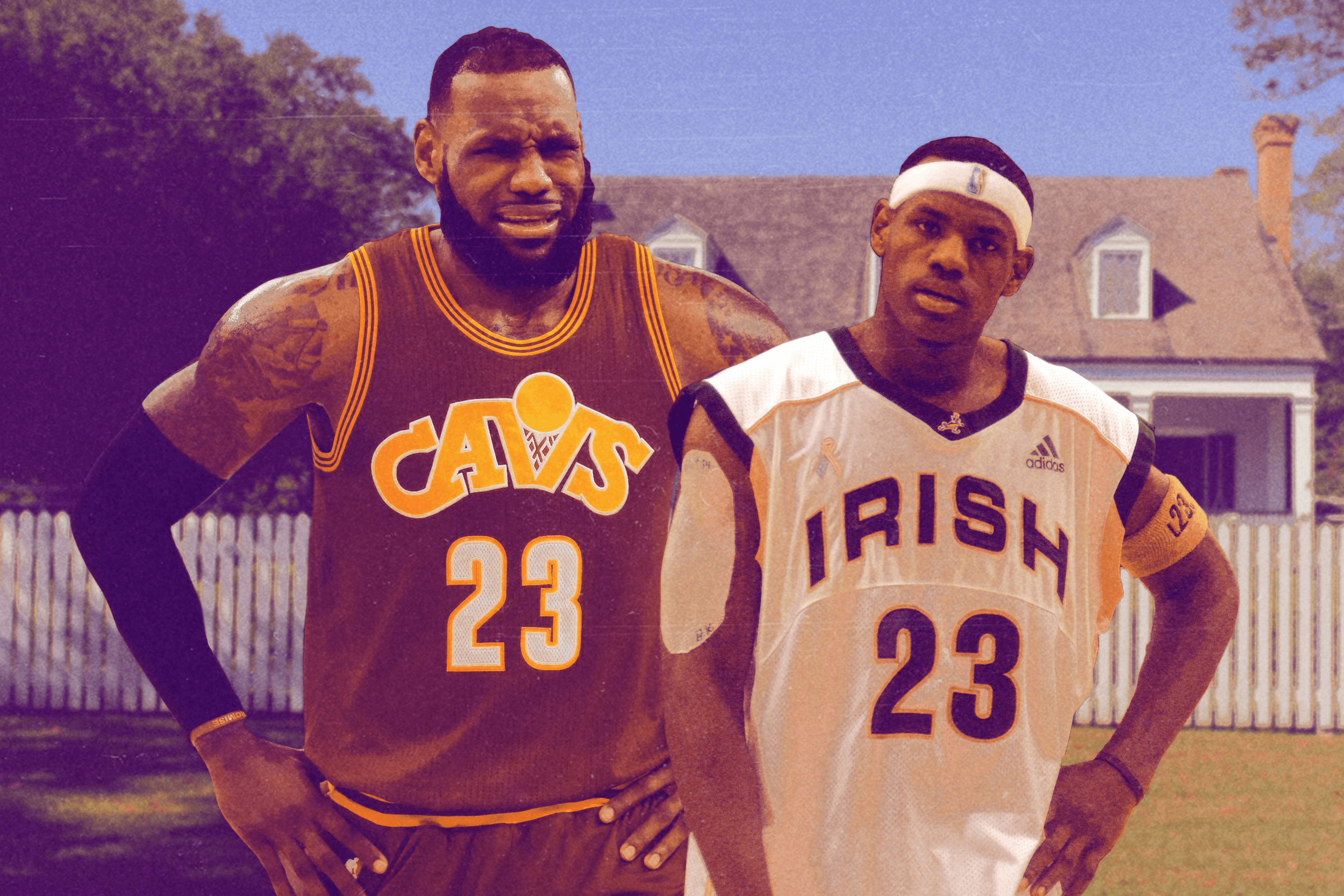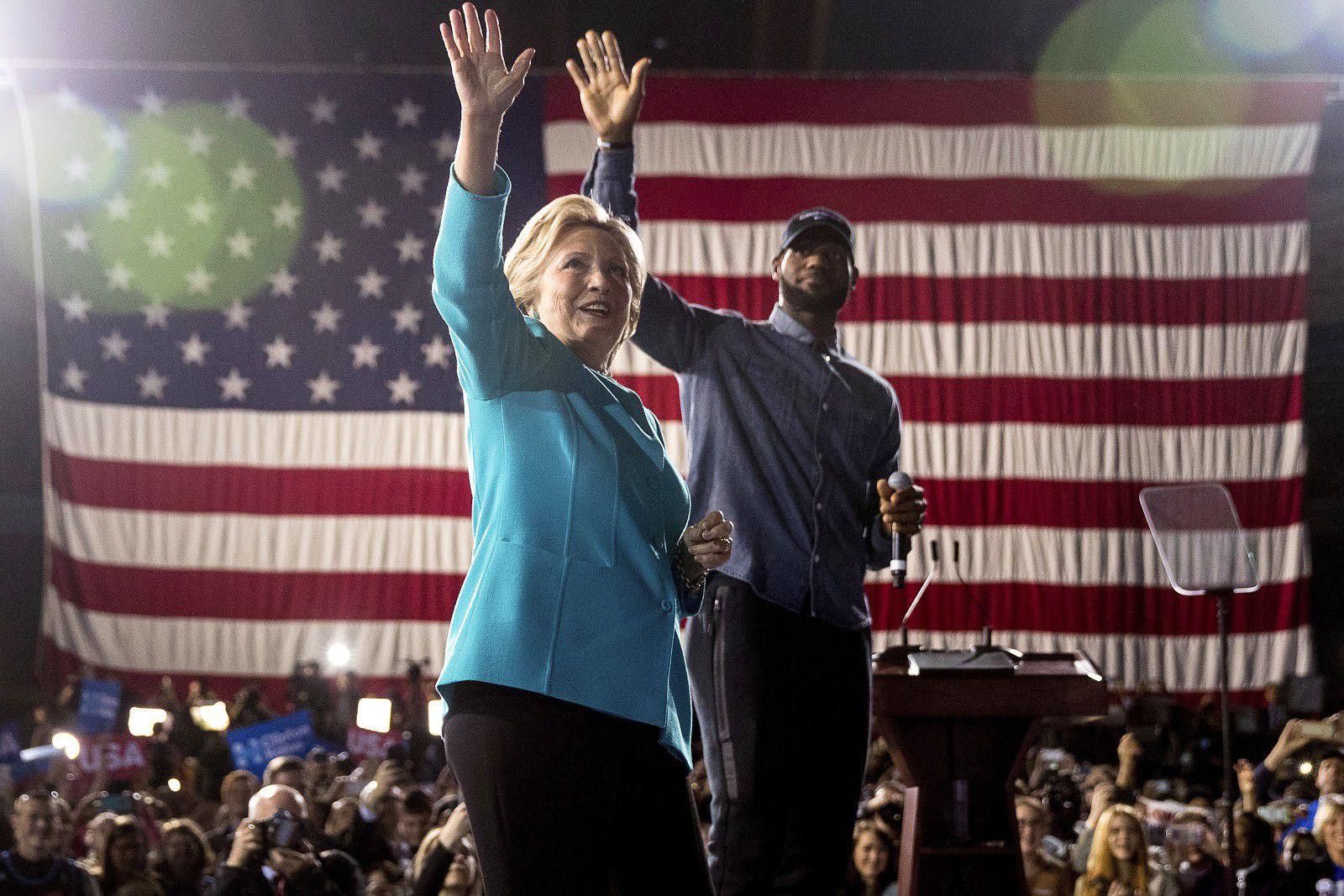
They say becoming a dad changes you in ways that you can’t anticipate. You might find yourself taking on responsibilities you once had considered beyond your scope. The welfare of others weighs heavy on a person. Or so I’ve heard. I don’t actually know.
LeBron James does, though. He’s a father of three. He has been the best player on every court he’s stepped on since, like, the ninth grade. But — and this is what sets him apart in the post-Jordan superstar firmament — his game has always been predicated on lifting his teammates to his level. LeBron has always thrived in an environment where he can present himself as first among equals. Relative equals, anyway.
A common armchair Bron-ologist observation, made in the past by experienced hands like Buzz Bissinger and J.R. Moehringer, is that James has been driven by a desire to replicate the familial atmosphere of his high school team. “This really comes across when you watch the More Than a Game documentary about LeBron and the Akron Fab Five,” Moehringer said in 2010. “He thrives, he’s happiest, he does his best when he is surrounded by friends.” Evidence of his search to recreate the green-and-gold bonhomie of St. Vincent–St. Mary is littered throughout his career: the move to Miami to play with Dwyane Wade and Chris Bosh, a plan allegedly hatched in the summer of 2006; the Banana Boat Brotherhood; the postgame hallway chill Instagrams; that months-long span when he got on Kevin Love for not hanging out. That was the era of Bro Bron.
But, those days are done. Over the past year, we’ve watched him morph: He is now Dad Bron. It’s only in this state that memes such as the following are possible.
Dads don’t emerge as if from thin air. There’s a course to be followed, a beginning and an end. This is LeBron’s journey to Dad Bron.
Kid Bron, 2003–2004
LeBron James’s first national commercial, for his first signature shoe, the Air Zoom Generation, was filmed on location at Sacramento’s now-defunct Arco Arena. During training camp. And it wasn’t just James. Presaging the immense institutional juice LeBron would soon have, the rookie and three Cavs teammates — Carlos Boozer (HOLDAT!), DeSagana Diop (LOL), and Dajuan Wagner — were allowed to leave camp and fly across the country for the shoot. Longtime Kings television announcers Grant Napear and Jerry Reynolds appear. Mike Bibby plays the foil. Damon Wayans is sitting courtside.
The first thing that jumps out at you is how young he is. His face is rounder and unlined, graced by a wispy, sparse teen dirtbag goatee. His hairline is roughly six years and a few centimeters from its current status as a low-hanging Twitter punch line. His arms and shoulders lack their present chisel. There are large parcels of untattooed acreage. He was 18.
The commercial itself is typically clever. Rookie LeBron gets the ball on the right wing, guarded by Bibby. He crouches into a triple-threat stance. This is the moment the sports world had been waiting for nigh on two years. Then … nothing. Foreshadowing the criticism that would dog him most of his career, James freezes, as if even he can’t believe the moment has arrived.
Grown-Man Bron, 2004–2008
These next two eras represent LeBron’s physical peak. Runaway train fast-break drives that asked defenders to weigh the risks to life and limb were an every night occurrence.
The emblematic moment of this era came when the King scored 48 points, including Cleveland’s final 25, in a crucial Game 5 against Detroit in the 2007 Eastern Conference finals. James set the twine on fire with a series of Mission: Impossible drives, bust-your-lip dunks, hanging jumpers, and fallaways that had a high degree of difficulty. At one point, after a running 3-pointer from the left wing over Chauncey Billups, Steve Kerr anointed the moment by moaning, “This is Jordanesque!”
Lonely Bron, 2008–2010
LeBron’s numbers never sagged in these years — even now, he’s a machine that pumps out 28, seven, and seven with such consistency that it’s almost boring — but by the time each season’s respective postseason rolled around, James would carry the flag, just one man, surrounded by paper players, screaming into the storm. By 2010, on the eve of his free agency, the burden of carrying Mo Williams, a washed Shaquille O’Neal, Delonte West, and Antawn Jamison sunk James to his professional nadir, with a shockingly passive 15-point, six-rebound, seven-assist performance Game 5 against the Celtics in the East Conference semifinals.
Bro Bron, 2010–2014
In the summer of 2010, LeBron shocked the world by leaving his hometown team for Miami. With Banana Boat member Dwyane Wade playing lead guitar, Chris Bosh on keys, and Ray Allen on tambourine, these Heat teams were the closest corollary to James’s St. Vincent–St. Mary team. They would make four straight Finals, winning two.
Dad Bron, 2015-Present
An underrated aspect of LeBron’s return to Cleveland in 2014 was his age and experience in relation to that of his teammates. For the first time in his career, he was unambiguously the old guy. Life comes at you fast. LeBron’s pro debut at Arco feels like yesterday. Imagine what it feels like for him.
From kindergarten through senior year of high school, I was one of the youngest kids in my class; the result of a November birthday and the particularities of the New York public school system. The knock-on effect of that is, to this day, it feels weird to not be the kid in the room. It’s still slightly shocking when I’m expected to take on the gravitas of grown-ass adult. That’s what happened when James left the Heat.
In Miami, LeBron was among peers and contemporaries. When the Heat won their second title, defeating the Spurs, LeBron was 28, the same age as Chris Bosh. Wade was 31. Ray Allen was the old man of the bunch at 37.
When he arrived back in the Land, James found himself, for the first time, having to teach younger teammates how to play basketball. James was 30 when he came back to Ohio. Kyrie Irving was 22 and used to being the Man on terrible teams. Tristan Thompson was 23. Kevin Love, a three-time All-Star, was 26 and had never been part of a winning team in his six-year career. And, of course, there’s the mercurial clown prince himself, J.R. Smith, then 29, but eternally 16 in spirit.
Then there was coach David Blatt, fresh from the Euroleague and overly sensitive about the fact that he was, technically, a rookie.
Suddenly, after four years of playing with high-level veterans for a young but proven coach working under the sage eye of historic winner Pat Riley, LeBron found himself as the touchstone for, basically, an entire franchise.
That entire first campaign was like the second act of Manchester by the Sea, but if Casey Affleck suddenly found himself the legal guardian of four kids. No wonder that entire season was a series of growing pains.
Whatever drama went down between Miami’s Big Three (plus Ray) — and there was plenty — James’s return to Cleveland was something different altogether. During the second game of the 2014–15 season, a 114–108 overtime win against the Bulls, cameras caught Irving turning to old man Mike Miller to sincerely ask, “Is this similar to what a playoff game feels like?” This was not a question Dwyane Wade or Ray Allen would have asked. Later that season, James found himself in the interesting position of chiding Kyrie, a classic shoot-first point guard, for having zero assists in a game.
“He came up to me and was like, ‘One, you can never have another game with no assists,’” Irving told Cleveland.com. “‘You can damn near have just one, two, three, but you can’t have zero.’ And I was like, ‘All right, cool, it won’t happen again.’ And it hasn’t happened since that game.”
After a 122–121 win over the Celtics, James made the Dad Bron transformation explicit. “It’s a process, and we learn from it,” James said. “I think on our team we have to see what we do well and what we don’t do so well. It’s easy to say it, but I kind of used this analogy early this morning: Right now, I feel like the young guys are like my kids. They’re not accustomed to reading textbooks. They like iPads. And you got to show them it looks better for them and that’s the process we’re in right now.”
This season, after over 1,000 games, 40,000 minutes, and nearly 28,000 points, James, at 32, is faced with the prospect of his athletic decline. Mortality has kicked Bron’s dadness into high gear, and not even the rapturous joy of bringing Cleveland’s 52-year title drought to a close can temper his paternalism. He’s doing dad shit.
Like cleaning up his teammates’ dirty drawers.
“Hopefully I only have to say something once,” James said, promising to address the laundry littering with the Cavs. “Can’t leave the locker room like that.”
Like teaching them about the importance and potential heartbreak of civic engagement:

He’s dressing like the gulliest Greek Orthodox priest ever, while demanding that GM David Griffin add players to Cleveland’s league-high payroll.
That dadness is a result of James’s institutional power in Cleveland, sure. He’s had the most juice in the league since 2010 and is the most powerful superstar we’ve ever seen. But the reason the transformation is so striking, the reason his get-off-my-lawn routine draws, has as much to do with a generation of fans who have grown up with him. LeBron wasn’t just a prospect — he was a prophecy. And it came true, to the tune of three titles, four MVP awards, and so many highlights they blur together. Over the past 14 years, he has been the engine of the NBA. But what happens after the prophecy comes true? This is uncharted territory. LeBron’s first Sports Illustrated cover feels as if it came out five minutes ago. He’s probably not happy about it.
Of course not.
OK, Dad.